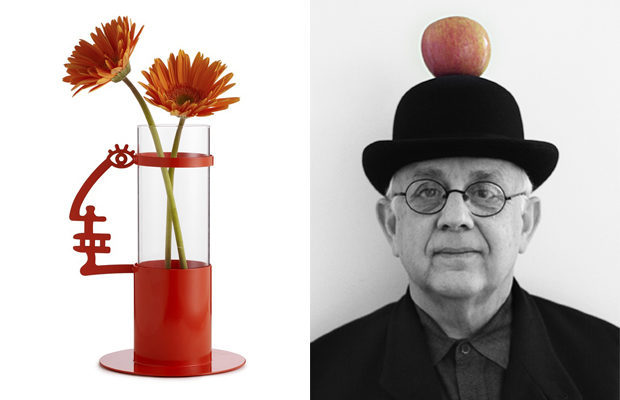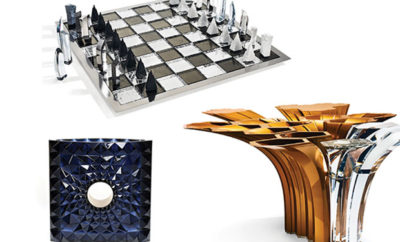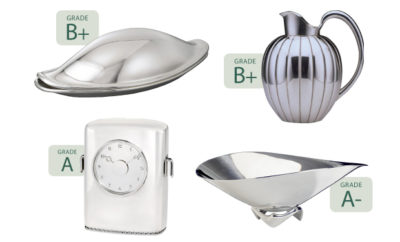 Profile Vase by Andrea Branzi. | George M. Beylerian.
Profile Vase by Andrea Branzi. | George M. Beylerian.
Design
George Beylerian celebrates Italian design with the launch of Design Memorabilia
ITALIAN DESIGN HAS HAD A FIRM GRIP ON GEORGE M. BEYLERIAN ever since he first entered the field in 1964. “I was a victim, a lucky victim,” he says with a laugh. When reflecting on the genesis of his career in design, the founder of Material ConneXion, the world’s largest materials resource library, thinks back to those formative years he spent in Italy, surrounded by designers and witnessing firsthand their ingenuity and prodigious output. “My early years in business took me to Italy, and that really forced things because Italy is full of design and creativity,” Beylerian recalls. The launch of his latest venture, Design Memorabilia, this past summer, brings him full circle—collaborating once again with some of the very designers and friends he has worked with over the last five decades, harking back to the time of his first business in New York City, the popular design store Scarabaeus, which opened in the mid-1960s and was known for its Italian home furnishings.
Over the years, Beylerian has worn many hats—entrepreneur, curator, collector, among others—and this new project has given him the opportunity to resume that of merchant, a title of which he is particularly fond, by teaming up with old colleagues to develop beautiful products at a reasonable price point, while paying homage to Italian design.
Timely yet commemorative, Design Memorabilia’s inaugural collection, aptly named de Gus- tibus, is at once forward-thinking in its mission and preservationist in spirit. Coinciding, both thematically and timing-wise, with the 2015 Expo Milano called “Feeding the Planet, Energy for Life,” the collection presents new and old tabletop design—some reissued, others slightly re-imagined—from thirty-two notable designers (living and dead), most of whom are Italian, or have worked and lived in Italy. The line first debuted in July at the MoMA SoHo Design Store, reviving several past pieces while introducing new ones, from designers such as Tobia Scarpa, Paola Navone, Frederica Marangoni, Aldo Cibic, and Roberto Sambonet.

Paesaggio Italiano four-piece set by Aldo Cibic.
“I revisited things I was doing fifty years ago as a young man. First, was one of the pieces in the collection by Ettore Sottsass—those are the square bowls with the round cup—I used to sell them in my store in 1967, and for the same price as now after all these years,” Beylerian explains. “There was a lot of symbolism and emotional implications in many of these pieces.”
In the case of Anna Castelli Ferrieri’s Cirri Cookie and Cake Stand, Beylerian decided to bring the piece, first produced in 1991 for Sambonet Italy, back to life. This time, it is made of ABS plastic instead of silver, yet still retains its delicate, lace-like form. Only now the stand is being sold at “one-tenth of the price” Beylerian says. “Like I say sometimes, there is a time and place for everything. It was probably designed too early or it was designed too precious and the market wasn’t there for the precious category.”

Cirri Cookie and Cake Stand by Anna Castelli Ferrieri (designed 1991).
Running the gamut from elegant to humorous to whimsical, the collection illustrates how small,everyday objects can serve many purposes, as useful and amusing, practical and eye-catching— Elio Fiorucci’s playful Carrot Globe and Kitchen Timer or Angelo Mangiarotti’s sculptural Trio Bud Vases made of porcelain, for instance. And in spite of the collection’s tongue-in-cheek name, the designs are, by no means, merely souvenirs. “This is not a memorial type of thing where you come and go with it. They are classics you see. We expect to continue—and even hope maybe to add more,” Beylerian says.
And, indeed, these designs, many conceived so long ago, are again finding their way into people’s homes—proving that the past is very much part of the present, and, as Beylerian says, “It is a revival—it is a poke in the arm so to speak.”












